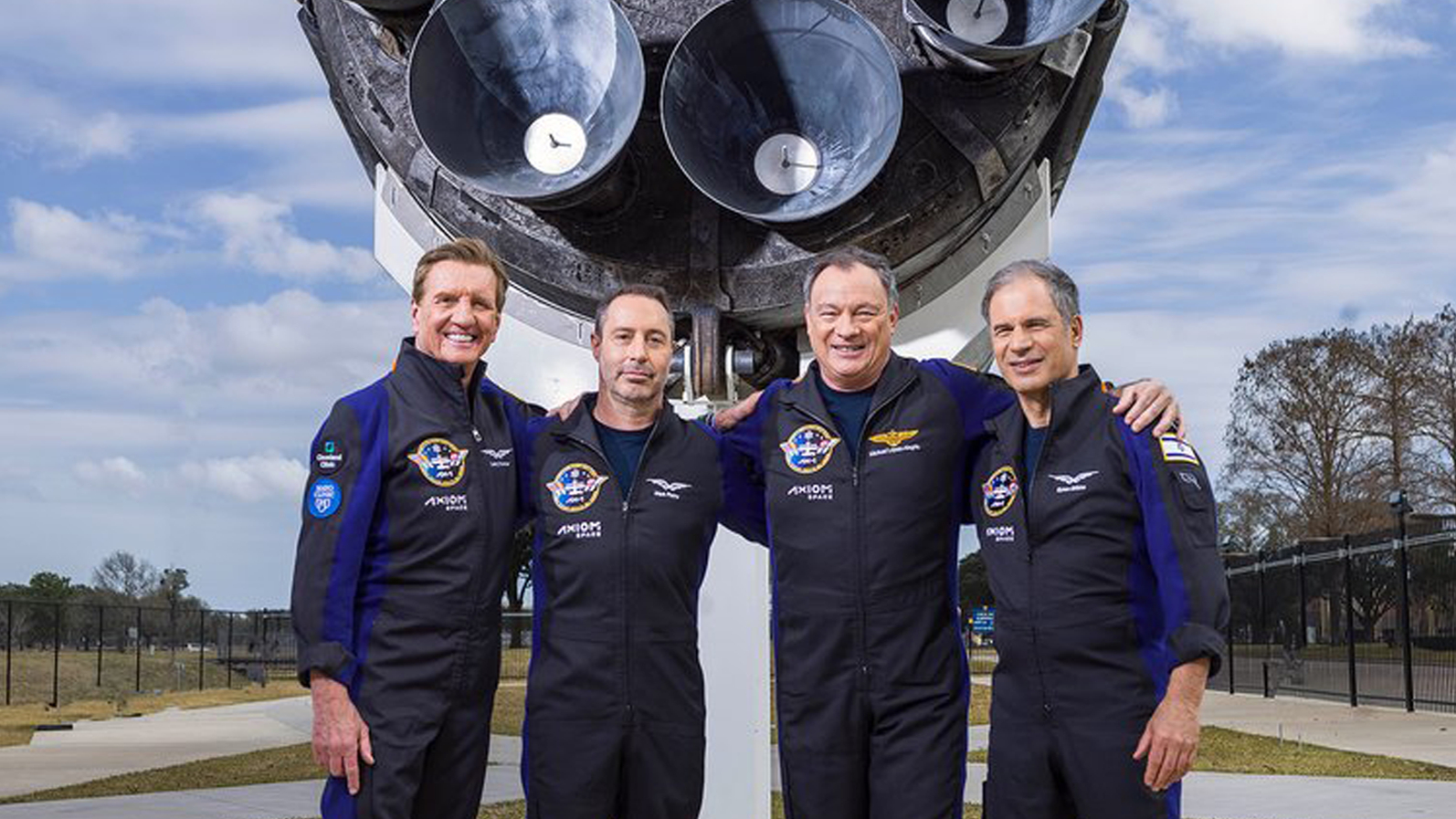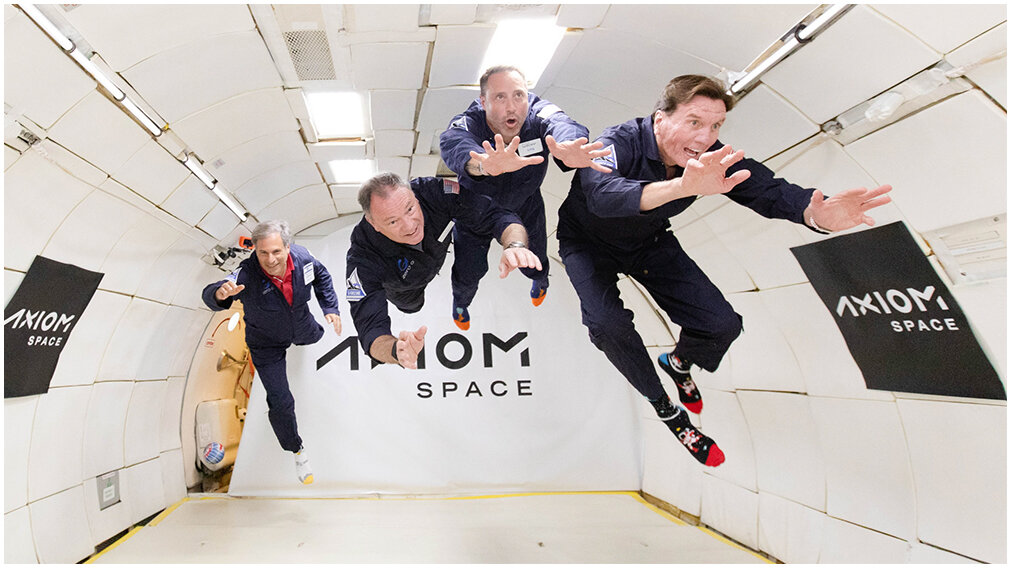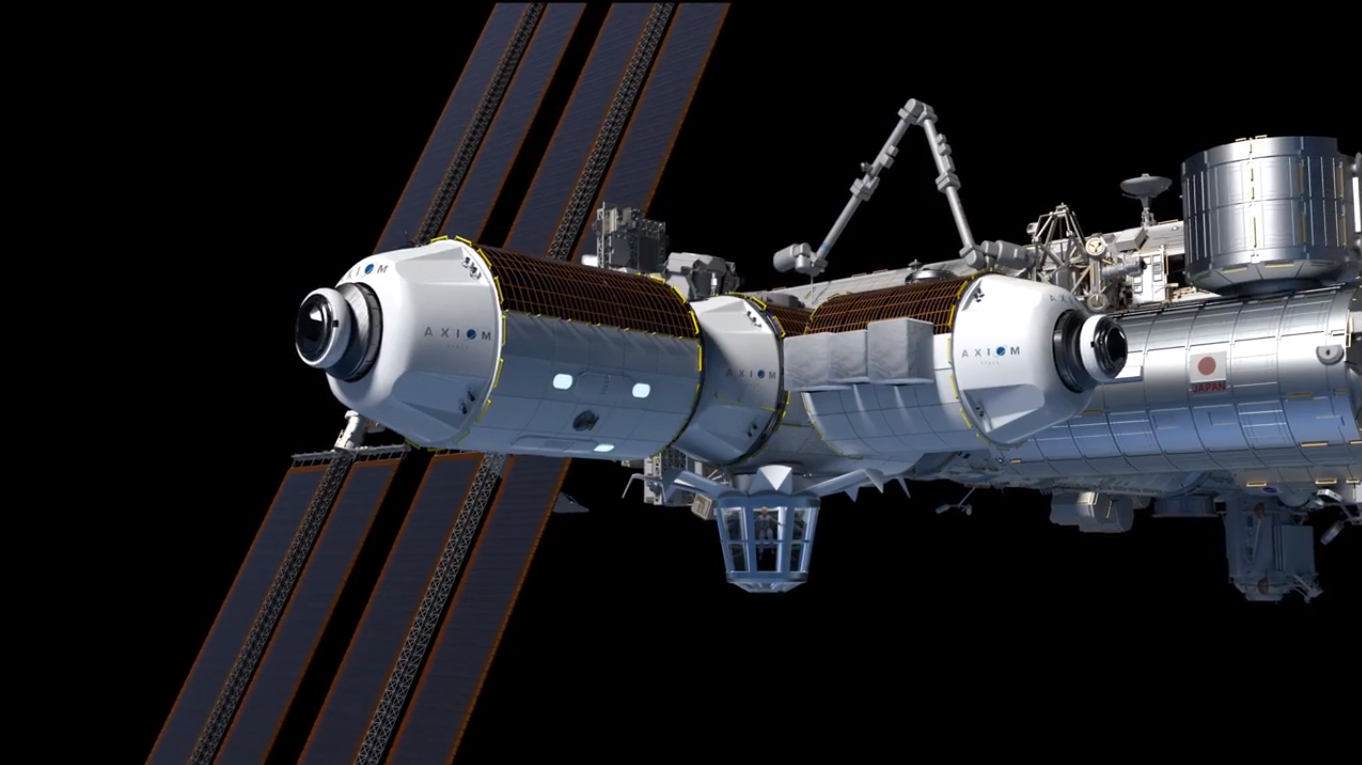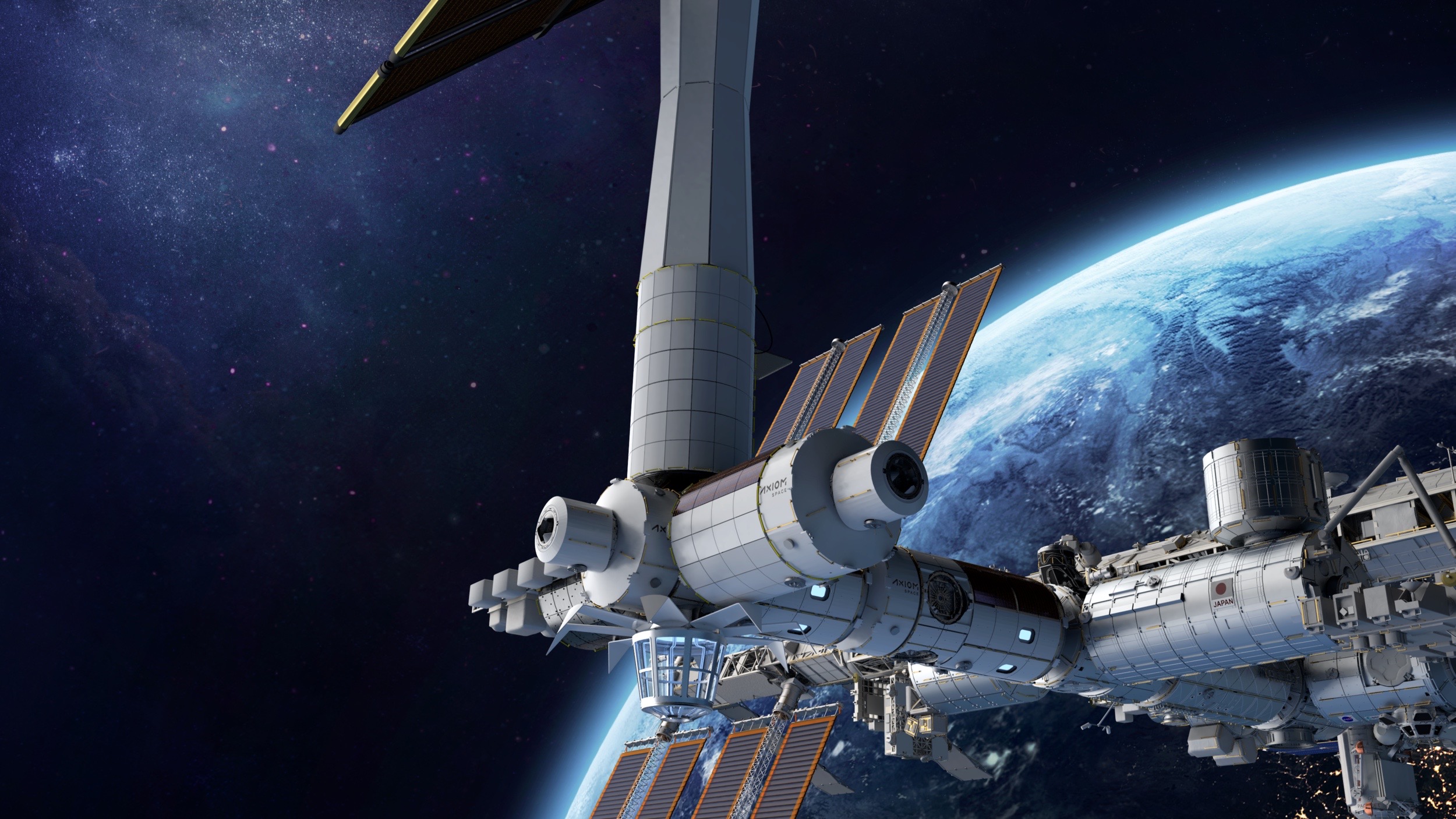SpaceX's private Ax-1 astronaut flight cleared for launch pending NASA Artemis 1 moon rocket test
The first all-private mission to the International Space Station by Axiom Space will launch no earlier than April 3.

The commercial spaceflight company Axiom Space is cleared to launch the world's first all-private mission to the International Space Station in April, but only after a critical test of NASA's new Artemis 1 moon rocket.
The Ax-1 mission to the International Space Station passed its flight readiness review Friday (March 25), allowing the launch to proceed no earlier than April 3 atop a SpaceX Falcon 9 rocket. The mission will launch from Pad 39A at NASA's Kennedy Space Center, where SpaceX launches astronaut missions for NASA on Crew Dragon spacecraft.
On board will be former NASA astronaut Michael López-Alegría as commander, and paying passengers Larry Connor (the pilot), Mark Pathy and Eytan Stibbe (both mission specialists). The passengers each paid a reported $55 million for the opportunity.
Live updates: The Ax-1 private mission to space station
Photos: The first space tourists
But NASA's Artemis 1 moon rocket, parked at a nearby Launch Pad 39B, will need to complete its so-called "wet dress rehearsal," a vital fueling test, before Axiom Space can proceed with its Ax-1 mission. That fueling test is scheduled to run from April 1 to April 3, NASA has said.
"Artemis 1 has the range," said Kathryn Lueders, associate administrator for NASA’s space operations mission directorate, during a press teleconference Friday. Regarding the Artemis 1 testing, Lueders added, "our plan is to get that done as early as possible."
The wet dress rehearsal will see Artemis 1 do a simulated countdown on the pad to ensure the mission's debut Space Launch System rocket is ready for its first voyage, an uncrewed flight around the moon.
Get the Space.com Newsletter
Breaking space news, the latest updates on rocket launches, skywatching events and more!
Both Artemis 1 and Axiom 1 are parked nearby each other at NASA's Kennedy Space Center in Florida. Artemis 1 may be able to complete its wet dress rehearsal on the morning of April 3, at Launch Complex 39B.
Assuming the rehearsal goes to plan, Axiom 1 may blast off atop a SpaceX Falcon 9 rocket at Launch Complex 39A that afternoon, at 1:13 p.m. EDT (1713 GMT). But the schedule will be tight and is subject to change, NASA emphasized.

Lueders acknowledged that having such a scheduling traffic jam is a "good problem to have," as it shows a healthy range of missions. That said, the situation could lead to backups, especially if weather or technical issues accrue.
Ax-1 has until April 7 to launch and not impact a NASA space station mission, Crew-4, aboard another Space Dragon, NASA said during the same press conference. Crew-4 is scheduled to launch April 19.
Also needing to be accounted for is the various stays in space of these vehicles, and their returns. Landing is often tricky at Kennedy, which is against the Atlantic Ocean and subject to weather, so NASA officials emphasized everyone will need to be flexible with regard to launch and landing dates in the coming weeks.
But assuming all goes to plan, Ax-1 will dock with the space station April 5 for an eight-day expedition that will be devoted to science on behalf of numerous institutions who have connections with the spaceflyers. Collectively, the crew plan to spend roughly a tenth of their time (100 hours) on science, medical and tech investigations.
One benefit of so many missions, however, is stuff in space can come back to Earth a little early. NASA has partnered with the Ax-1 crew to deliver some science and other things back to Earth, noted Dana Weigel, deputy manager of NASA’s International Space Station Program.
"We're partnering with Axiom to return two of our freezers that will have critical frozen science samples in them," Weigel said. "That's always a precious commodity for us, [and] we tend to get a backlog on orbit. They will also be helping by returning a really large air tank for us."
The readiness review itself went well, with both the crew and the hardware described as ready for the opportunity.

"Human spaceflight is unbelievably humbling and difficult, and we must always listen to our hardware and not get focused on schedule," said William Gerstenmaier, SpaceX's vice-president of build and flight reliability who formerly held a NASA senior role in human spaceflight.
"We need to listen to the data, learn real-world lessons and make sure we're ready to go fly safe," Gerstenmaier added. "I think today's review showed that this team's ready to go do this and we're ready for this exciting period."
A step toward private space stations

Ax-1 will be a proving ground for Axiom, which aims to operate its own commercial space station. The Houston-based company wants to launch a private module to the International Space Station in 2024 to start building on that goal.
Axiom hopes to build up its company's flight experience quickly. NASA has already greenlit Ax-2, which is currently scheduled to launch from Kennedy by 2023. Former NASA astronaut Peggy Whitson is set to command the proposed flight. Ax-2, Ax-3 and Ax-4 are all contracted to fly with SpaceX.
Ax-2 will be a short flight like Ax-1, but future missions could last up to 30 days at a time once Axiom Space's module is at the station, the company said.
"For us, it [Ax-1] really is the first of a series of flights precursor missions before our station comes to orbit," said Michael Suffredini, Axiom's president and CEO and NASA's former International Space Station program manager from 2005 to 2015.
"The first module will come into orbit in the latter part of 2024, and so this really is paving a way for a new era where there are more and more opportunities for individuals and nations around the world to live and work in the microgravity environment," he added.
Follow Elizabeth Howell on Twitter @howellspace. Follow us on Twitter @Spacedotcom or Facebook.
Join our Space Forums to keep talking space on the latest missions, night sky and more! And if you have a news tip, correction or comment, let us know at: community@space.com.

Elizabeth Howell (she/her), Ph.D., was a staff writer in the spaceflight channel between 2022 and 2024 specializing in Canadian space news. She was contributing writer for Space.com for 10 years from 2012 to 2024. Elizabeth's reporting includes multiple exclusives with the White House, leading world coverage about a lost-and-found space tomato on the International Space Station, witnessing five human spaceflight launches on two continents, flying parabolic, working inside a spacesuit, and participating in a simulated Mars mission. Her latest book, "Why Am I Taller?" (ECW Press, 2022) is co-written with astronaut Dave Williams.









